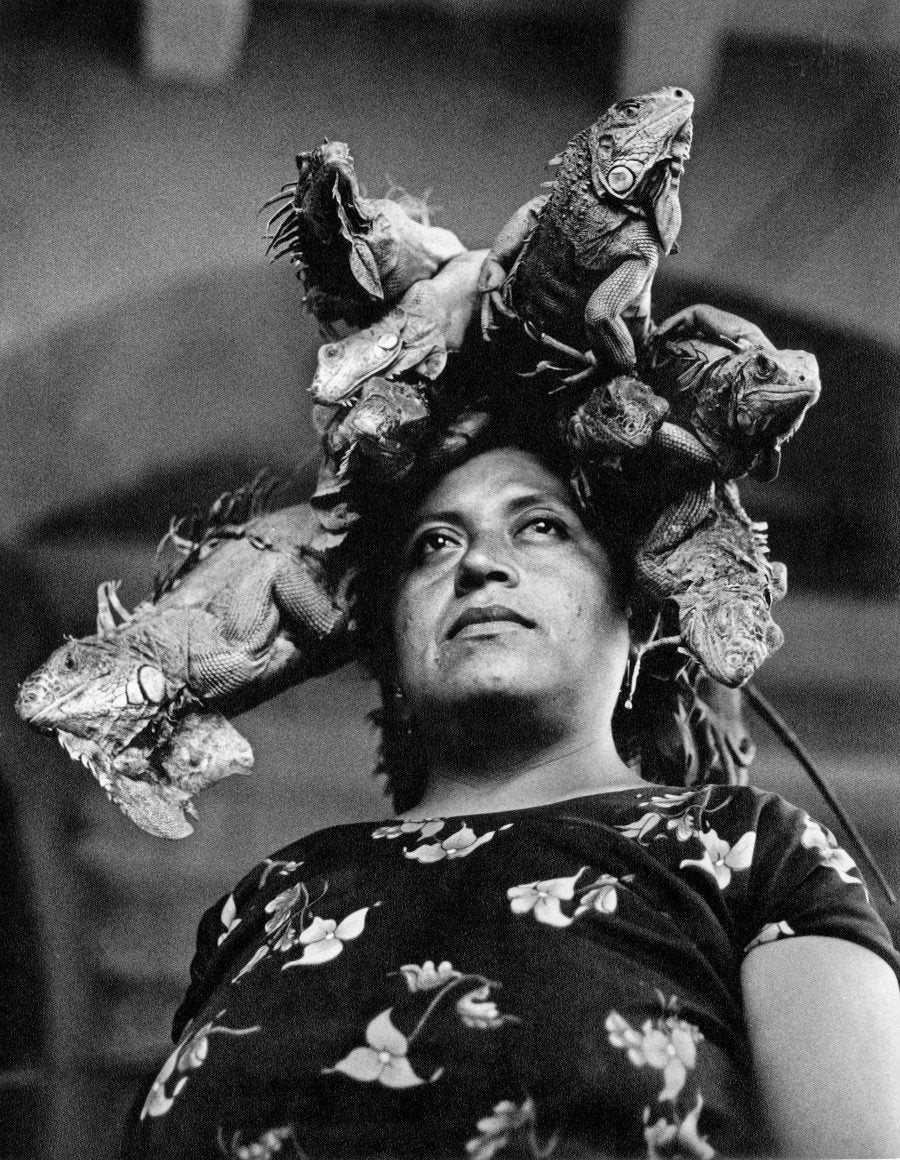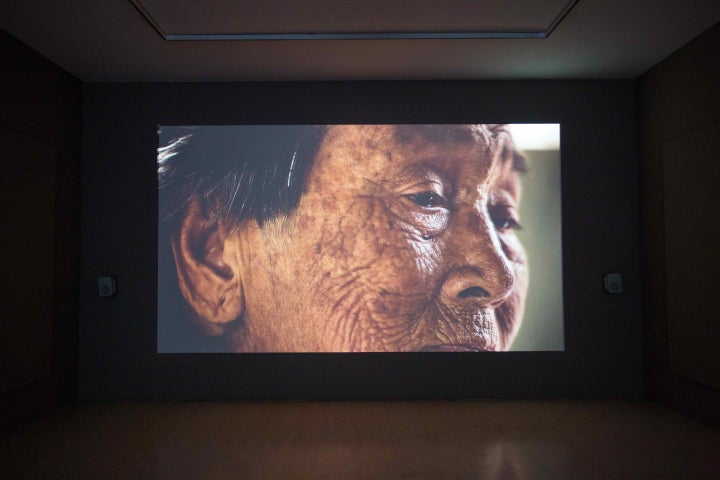
“Pain slowly reappears when we try to escape from memory and oblivion. ‘Reincarnation’ does not seek to signify the emergence of an unprecedented phenomenon, but suggests a way of remembering the deceased and the suffering, as well as restoring conscience, morality, empathy, and justice.” -IM Heung-soon, translated by Harry C.H. Choi
These words may have the sheen of a poet’s, but they were composed by artist IM Heung-soon in a mere email. We were corresponding about “Reincarnation,” his video installation currently on display at MoMA PS1. I had asked the 46-year-old Korean artist the most obvious question of all: the significance of his work’s title.
In a sense, the disparity between the two -- my question's simplicity, his work's complexity -- was unsurprising. IM’s art tends to estrange what feels familiar, while finding links between what seems disparate. His responses, like his art, are earnest and discerning: quick to pinpoint a discrepancy, eager to clarify what’s murky.
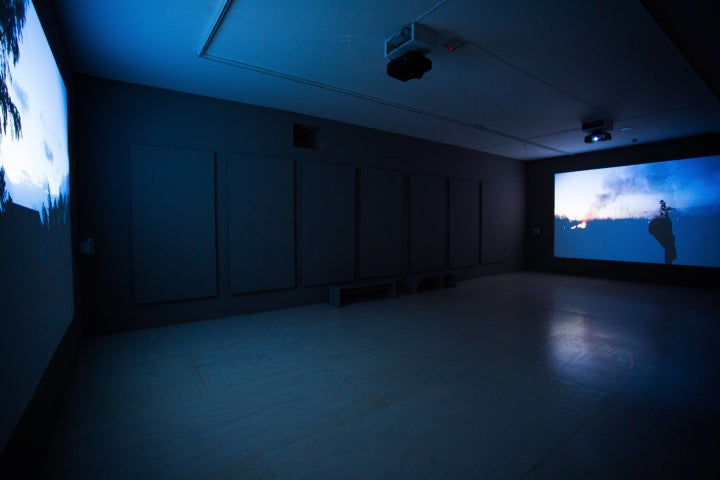
Both are welcome tendencies, for, when watched alone, “Reincarnation” will leave you displaced and uncertain -- especially if you’re an American. Two video feeds project on opposite walls, so that visitors must glance back and forth in a harried daze. The images seem incongruous: a veiled mother wailing on one channel is juxtaposed with the other’s tranquil ocean tides. The museum placard mentions the “foxhole circuit”: a group of female entertainers who traveled with Korean troops during the Vietnam War, then settled in Tehran, Iran. I was embarrassed to ask an artist who recently showed at the Venice and Sharjah Biennials about his work’s “plot,” until I realized just how thorny the tale was.
“Reincarnation,” in short, tracks Korean populations circulating between several countries, moved by historical reasons that Americans are, regrettably, little acquainted with. If you're a U.S. native, you probably know that armies are often accompanied by “foxhole” entertainers, but odds are you lack knowledge of the Korean circuit. You are also likely unaware -- as I was -- that Tehran was perceived as a locus of economic opportunity in the '70s, leading, for a short time, to an influx of Korean immigrants.
IM became acquainted with the Iran-settled foxhole circuit women during the 2012 Arts Council in Korea. He found their stories inspiring, for they’d “experienced all the major wars across Asia in the latter half of the 20th Century -- the Korean War when they were young, the Vietnam War as a part of the foxhole circuit, and the Iran-Iraq War after they immigrated to Iran.”
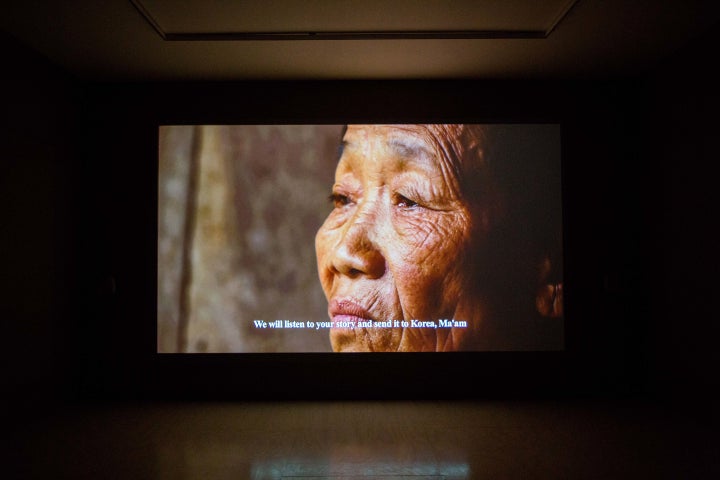
These women were the living vessels of a catastrophic time in human history, but IM is less interested in war’s intense violence than in its gradual, tragic legacy; the effects resonating across countries and through generations. Wails from Iranian mothers who lost their sons to war ripple through PS1’s industrial room, just as the film’s waves crash and crash again -- little pulses still stemming from cataclysm. His film does not aestheticize their pain, but rather interrogates the deep gashes it’s left behind. The effect is disarming. Americans, after all, have always been good at confronting the bloodshed of war, but far less adept at acknowledging its scarred legacy.
“That’s why I’m more interested in the violence within, inherent in ourselves, rather than the violence in front of us,” IM wrote, “‘Reincarnation’ is a question mark I throw at the audience, who is armed with ignorance, prejudice, apathy, and familiarity."
It’s a demanding statement, one that reaffirmed my sense that “Reincarnation” was intentionally alienating -- building on the cinematic precedents of the French Nouvelle Vague and the writings of Louis Althusser to distance rather than comfort the viewer. One technique IM lifts from that legacy is the reenactment, but he does not recreate old scenes in a traditional sense. He explained that he’s more focused on his subjects' unconscious and dreams, on finding alternative ways to convey stories that have been told many times before.

Alienation at PS1 takes place on an experiential level as well. Multiple channels cause viewers to separate and scramble their senses -- listening to sounds from one feed and region, while looking at an entirely different scene. “I was thinking about how to simultaneously show these two wars that don’t have any relevance,” IM adds. Viewers find themselves at the crossroads of old violences, swiveling back and forth, trying to piece together a cultural narrative with which they are unfamiliar.
(There’s also, I found out from IM, one less intentional cause of confusion: the fact that the videos at PS1 are only the second half of a larger artwork. The first is a multimedia installation featuring embroidery made by Korean-Iranian women and a soundtrack that interweaves their voices with those of Iranian women who lost their sons and of female victims of the Vietnam War.)
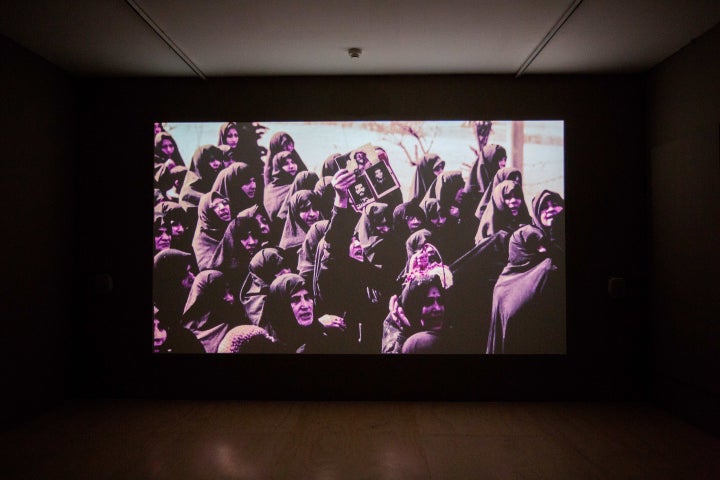
Americans will and should find the installations disarming, but I do not mean to imply that “Reincarnation” simply reiterates old alienation practices. As I reread IM's responses, a counterpoint to estrangement emerged: his gift for tracing thematic links to which we are otherwise blind.
Art focused on micro-histories may seem to subdivide the world into isolated, personal segments, making access difficult for those unacquainted with the few hundred Koreans remaining in Tehran today. But IM’s work reveals a more connective approach to history -- one that unearths the similarities between Iranian women, Korean-Iranian immigrants, and victims of the Vietnam War. Honing in on specifics lets him see how deeply they resonate with each other.
“I believe that many nations of Asia share a similar history,” IM explained, “in that they fought against, or were dominated by, the West through the process of colonization, the Cold War, and the control over natural resources.” If American viewers find themselves baffled by how Vietnam, Korea, and Iran are related, it is perhaps because we are blind to the way our country has shaped those similarities.
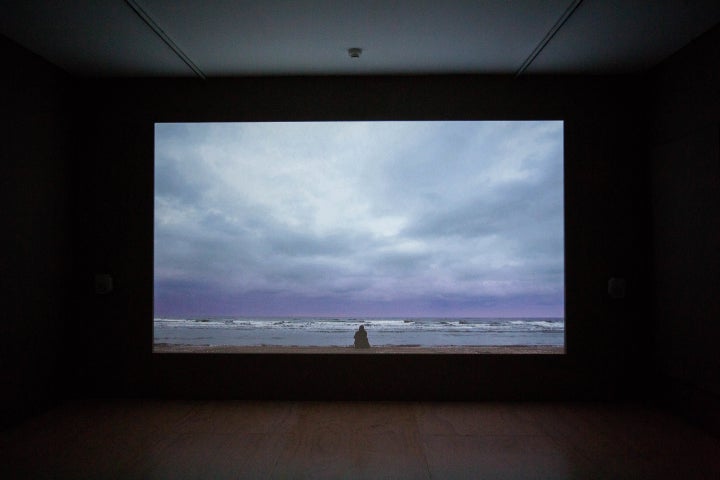
That global mindset reveals a shift from IM’s earlier work, which focused on micro-histories within Korea alone. A series of workshops with immigrant and migratory laborers in the early 2000s, however, spurred his interest is dislocation and diaspora. Spatial boundaries, as this new piece attests, carry little significance for him. But as he’s delved more into film, the “bigger categories of nation-states, religions, or ideologies” have taken on increasing importance. His talent is to first acknowledge those categories -- and then to dispense with them, unifying the despair felt by mothers of both Iranian and Korean soldiers with the video’s strummed soundtrack.
It's a shift in content and technique that distinguishes him from many internationally recognized Korean artists. Nikki S. Lee’s “Projects” brought her acclaim for playing with a cult of personality, Byoung Ho Kim’s sleek sculptures are a paragon of minimalism, Do Ho Suh’s heady installations warp visitor’s relationships with space. Hein-Kuhn Oh’s documentary work offers a closer analogy for IM’s, but his portraits engage with the complexities of his subject's surfaces, rather than with their interior worlds. The Korean pavilion at the Venice Biennial this year features a multi-channel video installation by Moon Kyungwon and Jeon Joonho, but it’s a far more fanciful rendition than “Reincarnation.” Titled “The Ways of Folding Space and Flying,” the work dreams of transcending limitations instead of confronting how those limitations have shaped us.

IM’s films, on the other hand, exists between two poles: distancing us from what is familiar, while making familiar what seems so strange. It’s worth returning, then, to his explanation of the work’s title: “Pain slowly reappears when we try to escape from memory and oblivion. ‘Reincarnation’ does not seek to signify the emergence of an unprecedented phenomenon, but suggests a way of remembering the deceased and the suffering, as well as restoring conscience, morality, empathy, and justice.”
"Reincarnation" will and should challenge our (American) morality, but it also reaffirms our capacity to empathize. Empathy, here, requires reconciling the multiple streams shaping our world both inside and outside the exhibition space. It requires forging unity from a lack of narrative consistency. And it requires feeling memory’s pangs, instead of sinking into ignorant oblivion.
"Reincarnation" is on view at MoMA PS1 through Aug. 24.
An enormous thank you to Harry C.H. Choi, who was kind enough to translate both my interview questions and IM’s responses, deftly maintaining his poetic sheen.
Correction: This article previously incorrectly stated that IM was 36 years old. He is, in fact, 46.
Also on HuffPost:

